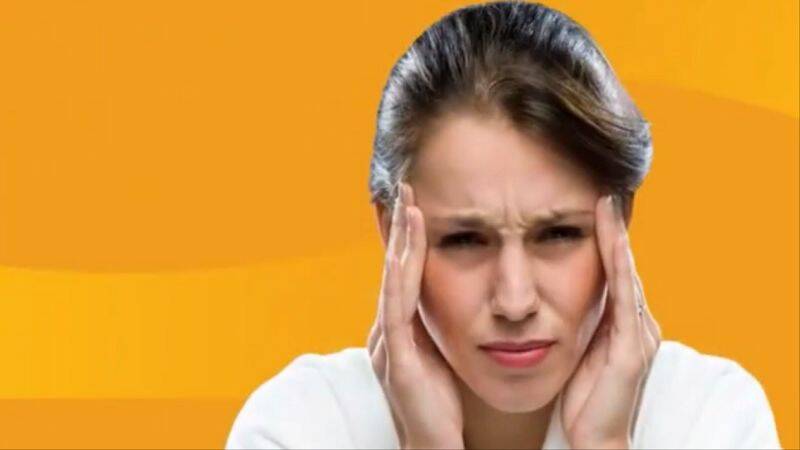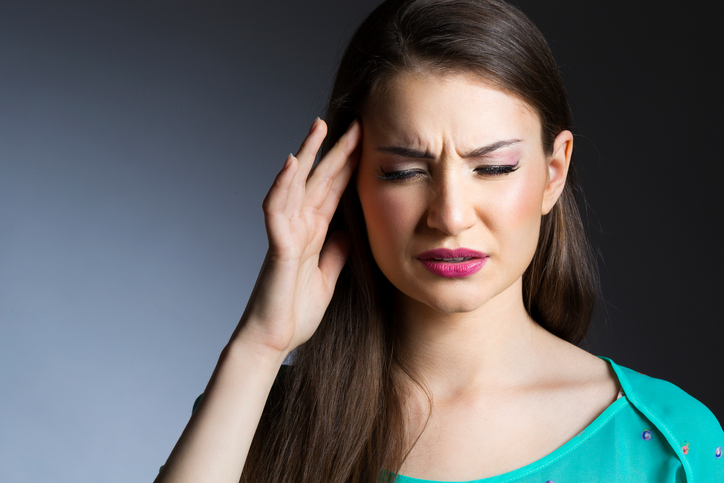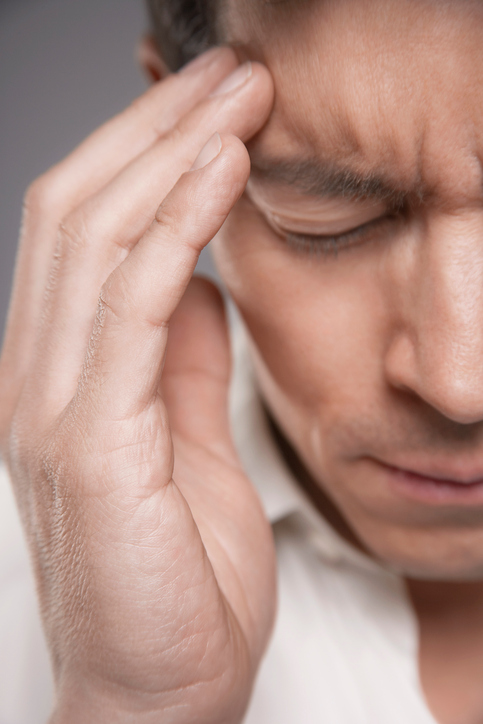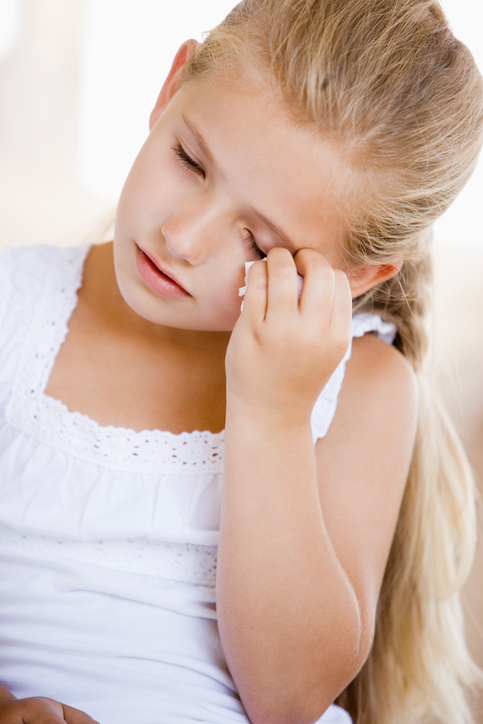- solen.sk - article by MUDr. Petrovičová Department of Neurology, University Hospital Nitra in pdf
- pediatriapreprax.sk - information on migraines in childhood
- viapractica.sk - migraine and menstruation
Migraine: What is this headache, what are its causes, symptoms and its treatment?

Migraine is a seizure headache. In addition to pain, it is accompanied by other vegetative, perceptual and sometimes movement symptoms. It is quite common and occurs as a child. It affects more women. The precondition for its origin is a family occurrence.
Most common symptoms
- Malaise
- Speech disorders
- Abdominal Pain
- Headache
- Eye Pain
- Muscle Pain
- Sensitivity to light
- Aura
- Nausea
- Head spinning
- Depression - depressed mood
- Double vision
- Diarrhoea
- Twinkles before the eyes
- Indigestion
- Concentration disorders
- Mood disorders
- Muscle weakness
- Pressure in the eye
- Fatigue
- Anxiety
- Vomiting after eating and nausea
- Vomiting
- Loss of field of vision
- Blurred vision
- Deterioration of vision
- Confusion
Characteristics
Migraine and/or headache, in general, is a very common problem. It has a negative impact on a person's quality of life, especially if it lasts for a long time or is repeated regularly.
Migraine is primary a headache. It has a seizure character, recedes over time, and then returns from time to time.
In addition to the quality of life, migraines have also a socio-economic dimension. Diagnosis and treatment are expensive, as is the impact on an individual's incapacity for work.
You might be interested in:
What is the disease and what are its symptoms and complications.
What forms do we know and what is an aura.
How is it treated and what helps with it?
Who affects migraines?
Both men and women are affected, and even children. It affects children aged 6 and culminates in adolescence. It reaches its highest rate in the 35th to 45th year of life. It is in retreat only after the age of 50.
Its occurrence is therefore related to age, but also to the gender,
as it affects women up to 3: 1 more than men.
Why does migraine occur?
Many people, experts, and doctors have dealt with this issue. Throughout history, various theories of its pathophysiology have emerged. For example, in 1940 it was Wolff's vascular hypothesis, in 1987 Hanington's platelet association hypothesis. In 1981 the work of Lauritzen and Olesen and in 1984 the theory according to Moskowitz.
Today's view suggests that a complex reaction between the vascular system in the central nervous system, together with the influence of released neurotransmitters on ion channels, may be the cause. This sentence is the most simplified technical definition of the pathophysiology of migraine.
A layman, and therefore a person with a migraine, does not need to know the pathophysiology, however, he should know what headache means. As headaches can indicate various other difficulties, and thus a serious threat to health and life.
What determines migraine and how it is divided

Not every headache is a migraine. The seizure type is typical, ie pain attacks alternate with a period of rest when one does not feel any difficulty. The pain is pulsating and its intensity is medium to very intense.
Migraine is characterized by unilateral pain and is associated with photophobia and sensitivity to noise. In many cases, even the feeling of vomiting.
And the pain itself is exacerbated by physical exertion.
Migraine attacks alternate 2-5 times a month and last for several hours, however, no more than three days. If more than 72 hours occur, the status is assessed as migraine status.
In 2004, the International Headache Society determined the way in which migraines are assessed.
Accordingly, it is divided into two types:
- migraine without aura represents up to 80% of cases, is also referred to as common migraine
- migraine with aura, about 18% of those affected suffer from it, the aura is a kind of introduction to headaches
The table shows the classification of migraine without aura
| Criterion | Description |
| A | at least 5 attacks, meeting criteria B and D |
| B |
|
| C |
present 2 of the following symptoms:
|
| D |
one of the following symptoms is present:
|
| E | exclusion of another cause of headache |
What is a migraine aura?
Aura in migraine means that headaches are preceded by certain neurological problems. If the time period is not sufficient, then in some cases the aura may run along with the headache.
Neurological symptoms usually last for several minutes up to one hour before the migraine attack itself.
The most frequent symptoms include visual, ie visual difficulties. Subsequently, paresthesias can also occur, ie a feeling of tingling, decreased sensitivity, and disturbances in the perception of position and movement. To a lesser extent, motor difficulties and various speech disorders occur.
The table shows the classification of migraine with aura
| Criterion | Description |
| A | at least 2 attacks in the presence of criterion B |
| B |
at least one of the following focal symptoms must be present to indicate cortical dysfunction:
|
| C |
present 2 of the following symptoms:
|
| D |
plus headache with criteria that begins during the aura or begins within 60 minutes of the aura
|
| E | exclusion of another cause of headache |
Causes
Over the years, the definition of migraine has changed. Thus, today's definition mentions the common interaction of several factors. An inherited predisposition is associated, with up to 70% of cases having a history of parents with migraines.
In migraine, it is well known that a migraine attack, i.e. an attack, can provoke so-called triggers. Of course, it is highly individual.

The most common risk factors provoking a migraine attack include:
- stress, increased mental strain
- emotions like anger, sadness
- pain , especially toothache, eye pain
- weather, and thus changes in barometric pressure
- food, especially with a higher content of substances such as amines (tyramine), sodium glutamate
- chocolate
- cheese
- onion
- nuts
- citrus
- bananas
- Chinese food (for higher glutamate content)
- sausages
- white flour pastry
- coffee, caffeine and beverages containing it
- alcohol, especially red wine, but also beer
- excessive food consumption
- hunger or later food consumption
- Improper sleep hygiene is therefore a lack or excess of sleep
- excessive physical activity
- travel and thus a change of environment
- smells and odors
- flashes of light
- hormonal changes
- menarche, ie the first menstruation
- menstruation, especially at the onset of bleeding
- menopause
- pregnancy
- hormonal contraceptives
- hormonal treatment
- drugs with an effect on blood vessels, especially their dilation, ie vasodilators, such as nitrates
Read also the article on: How to treat and prevent migraines? + 9 natural pain relief tips
Symptoms
Not every headache is a migraine.
And in order for this diagnosis to be determined, the classifications given in the tables apply. Thus, a migraine is characterized by a seizure form manifested by attacks. These are repeated and during the period between them, the person is completely fine and without difficulty.
Migraine may or may not be preceded by an aura. It usually takes a few hours, but a maximum of three days. In addition to one-sided headaches, other difficulties significantly intensify the attack period, which, of course, reduces the quality of life of the person concerned.

Characteristic features of migraine:
- attacks with a period of rest, ie between seizures, a person is completely without difficulty
- usually 1 - 5 times a month
- some people several times in a lifetime
- or 2-3 times a week
- duration several hours to three days
- if the migraine lasts longer than 72 hours, it is referred to as migraine status
- unilateral headache
- however, one-third of those affected have bilateral headache
- most often in the area of sleep
- on led
- behind the orbit, that is, behind the eye
- pain of a pulsating nature
- medium to high intensity
- exacerbation of pain during physical exertion and mental stress
- increased sensitivity to light and noise
- feeling sick (vomiting)
- visual disturbances
- speech disorders
- general fatigue
- weakness
- diarrhea or constipation may occur
Diagnostics
Before making a diagnosis, one turns to a general practitioner and, in the case of children, to a pediatrician. Subsequently, the diagnosis of headache is entrusted to a neurologist. Determining the cause of the problem is important, as there may be various problems behind the headache.
And it's also health and life-threatening.
Therefore, early diagnosis is very important. In determining the diagnosis, the doctor relies on the anamnesis, the clinical picture, ie the characteristic manifestations of migraine. The determination according to the tables already mentioned is used in the classification.
The diagnosis can be confirmed by a therapeutic test, and thus by the administration of 5-HT-1B / D receptor agonists, i.e. triptans. Subsequently, the neurologist performs a standard neurological examination. In addition to the neurological examination, internal or eye examinations are also performed. It complements the laboratory blood test.
Among imaging methods in the differential diagnosis includes X-ray, CT, MRI.
Course
Migraine is a seizure disease, manifested by attacks. As such, it has 4 phases.
These stages are divided into:
- prodromes
- aura
- headache stage
- terminal stage
As the first is therefore prodromal which may exhibit slight, subtle changes. There are hours but sometimes days in advance. A person can be irritated, tired, lose concentration, concentration.
Diarrhea or constipation, even more, frequent urination, may also be associated.
The aura stage begins 60 minutes before the actual attack of pain. The most frequent is the visual form. Various scotomas, light phenomena or dark spots can occur, as well as loss of field of vision. Sensitivity disorders are not uncommon in the aura.
Occasional speech impairment.
Subsequently, the very stage of headache begins. This usually takes 4 to 72 hours. The pain is mainly unilateral, located in the area of sleep, forehead, typically behind the eye. Photophobia is common, ie increased sensitivity to light, but also noise. Pain can be exacerbated by odors, mental as well as physical exertion.
Stomach upset, nausea and even vomiting are also associated.
The last, ie the terminal stage, begins after the headache has subsided. Man is weak, tired, exhausted during this period. He prefers peace, silence, darkness, and sleep. The time period is variable from a few hours to a day.
And individually, there can be a change in mood for better and positive emotions.
Migraine, children, and menstruation
Headaches of this type occur as early as childhood. And already in the 5th - 6th year of life.
Both sexes have approximately the same proportion of migraines until the first menstrual period, ie menarche in girls. However, in boys, it may start earlier.

Overall, the proportion is about 4%. While during puberty in girls is 17% represented and boys 5%. Which is evidence of a hormonal effect on migraines.
In children, it can also take place either with or without aura.
In childhood, it has certain specifics, namely:
- The headaches are usually bilateral, in the area of the scalp or forehead
- the child cannot give the exact location
- the frequency of seizures increases with age
- the duration of the attack is shorter
- pain intensity milder
- aura is less common, especially in children under 8 years of age, and is usually visual in nature
It is common in childhood that migraine attacks are preceded by changes in the child's moods and their activity decreases.
The child is pale, he may sweat. He doesn't want to eat him. He complains of dizziness. Smells and smells bother him. Abdominal pain, nausea, feeling of vomiting, anorexia are associated. He often urinates.
His body temperature may rise.
The time dependence is also normal in children. For schoolchildren, it is mostly after returning from school. For older children, older school-age at lunchtime. In the case of adolescents, difficulties start in the morning.
Even at this age, migraines are caused by provocative factors. These include flickering lights, light from TVs, computers. Of course, this also includes stress, increased mental strain, as well as physical exertion, fatigue, lack of sleep, and rest.
Difficulties can be exacerbated by poor eating habits, long periods without food.
Hormonal changes, menstruation
Already in childhood, there is a link to hormonal changes in women. The incidence increases after menarche, ie the first menstruation. And it usually peaks at about the age of 42.
Subsequently, it has a declining tendency after menopause.
Premenstrual migraine starts 1 - 7 days before menstruation. It occurs together with mood swings, emotional fluctuations. Thus, anxiety, apathy, is associated.
But also low back pain, tenderness, and swelling of the breasts.
Menstrual migraine, in turn, occurs on or just before menstruation and persists for 4 days during menstruation. Approximately 14% of women have so-called right menstrual migraines.
He enters with menstruation.
In short, a sudden drop in estrogen has a significant role to play, resulting in migraine triggers. It is similar in the case of menopause. This type of migraine is usually more intense and also less responsive to treatment.
On the contrary, during pregnancy, the incidence of migraines decreases and the course is milder due to the stability of estrogens.
How it is treated:
is treated by
Interesting resources
Related










